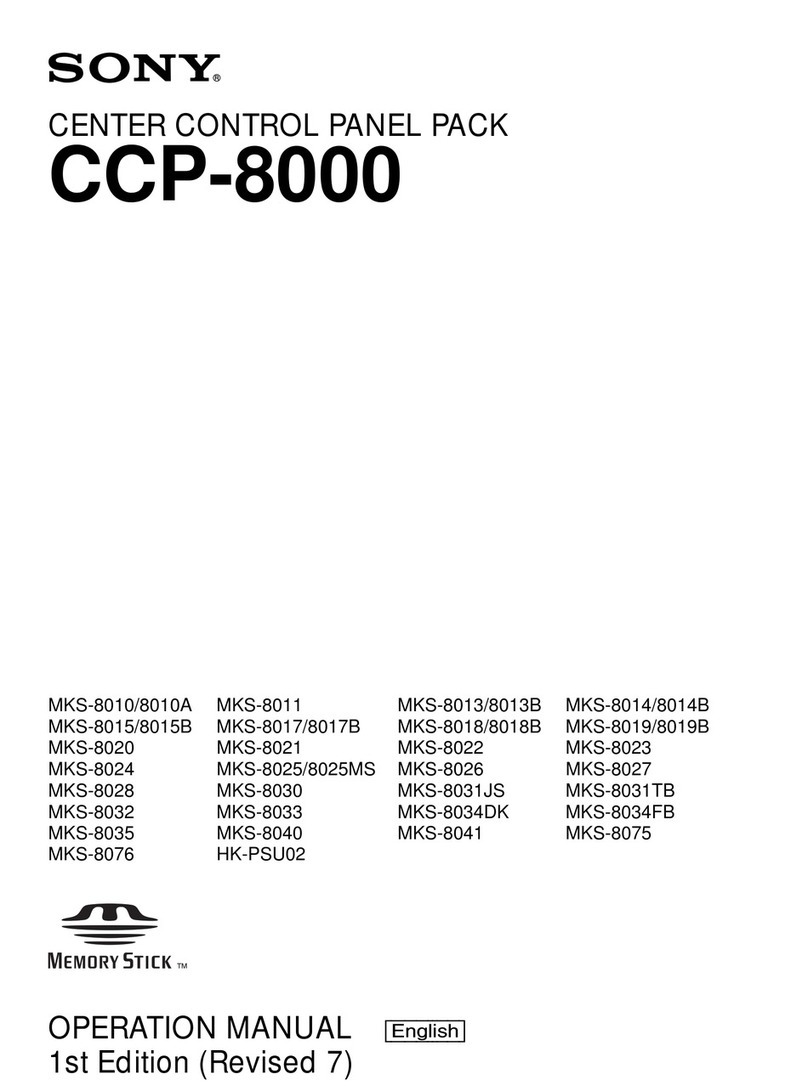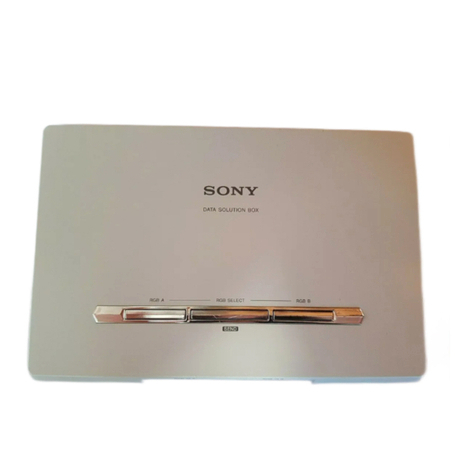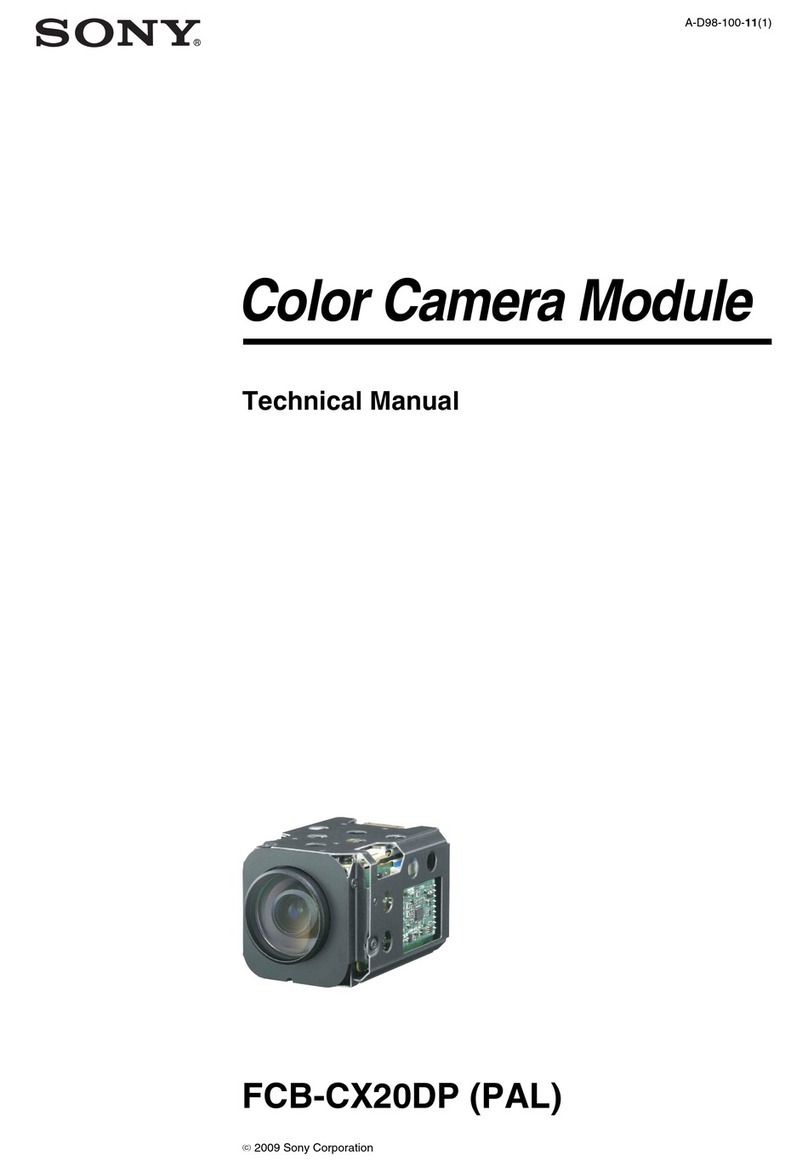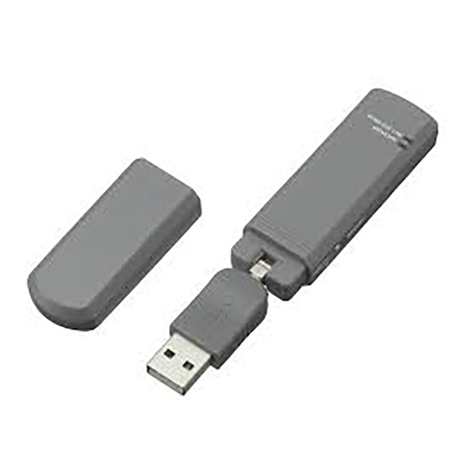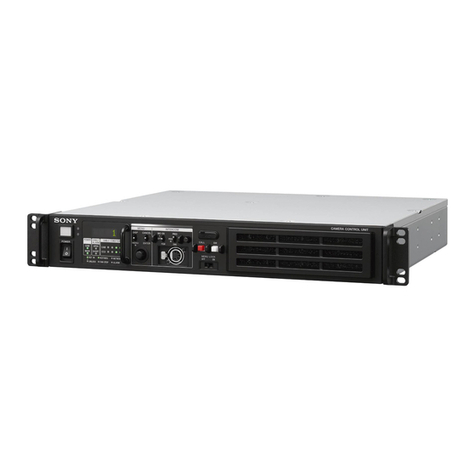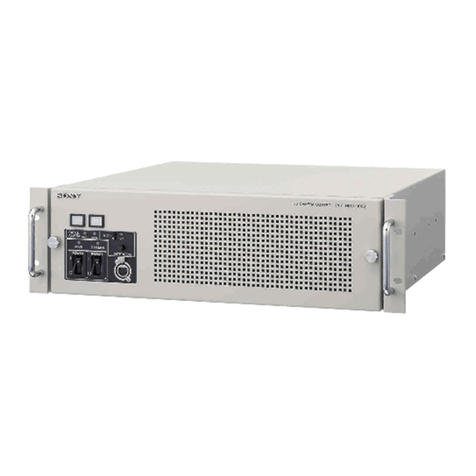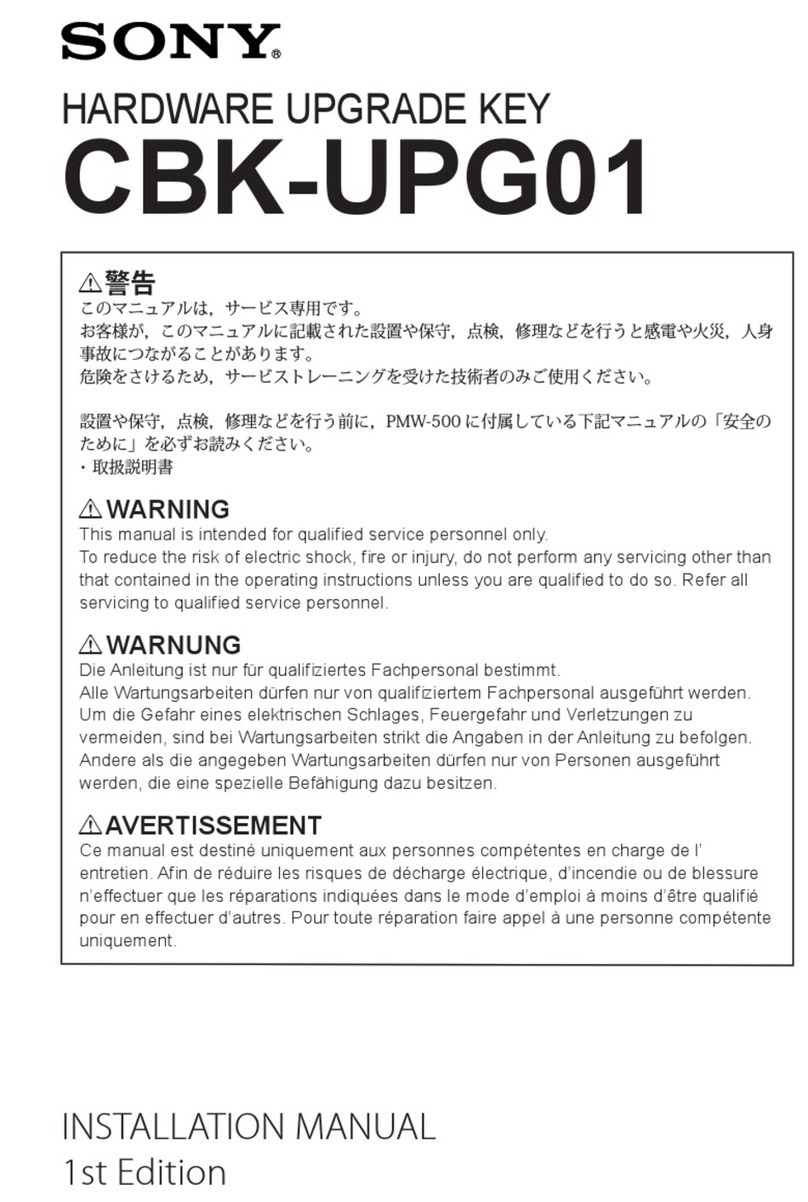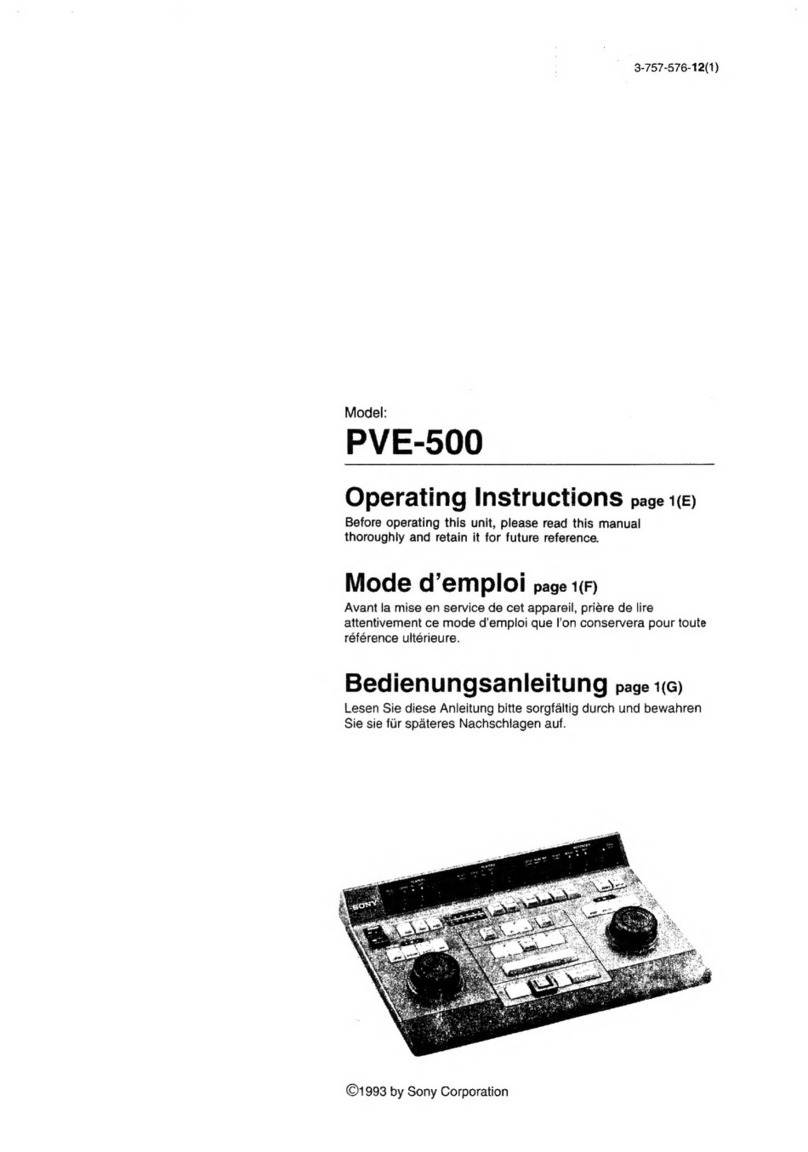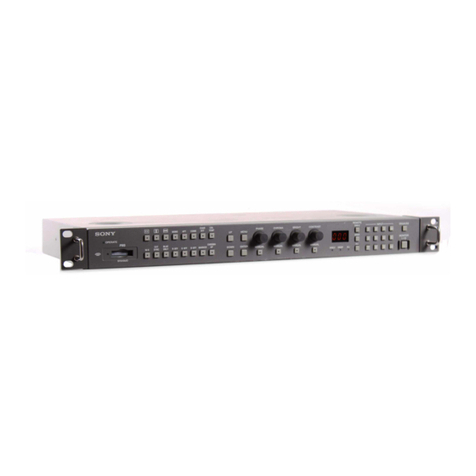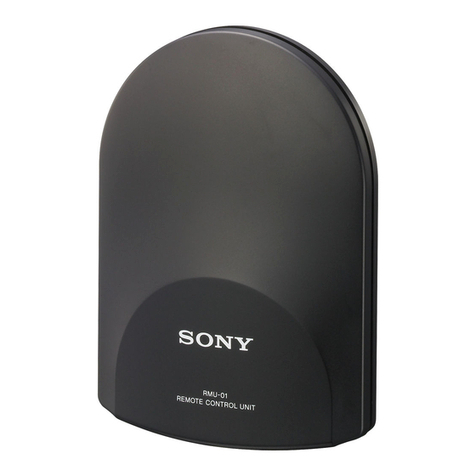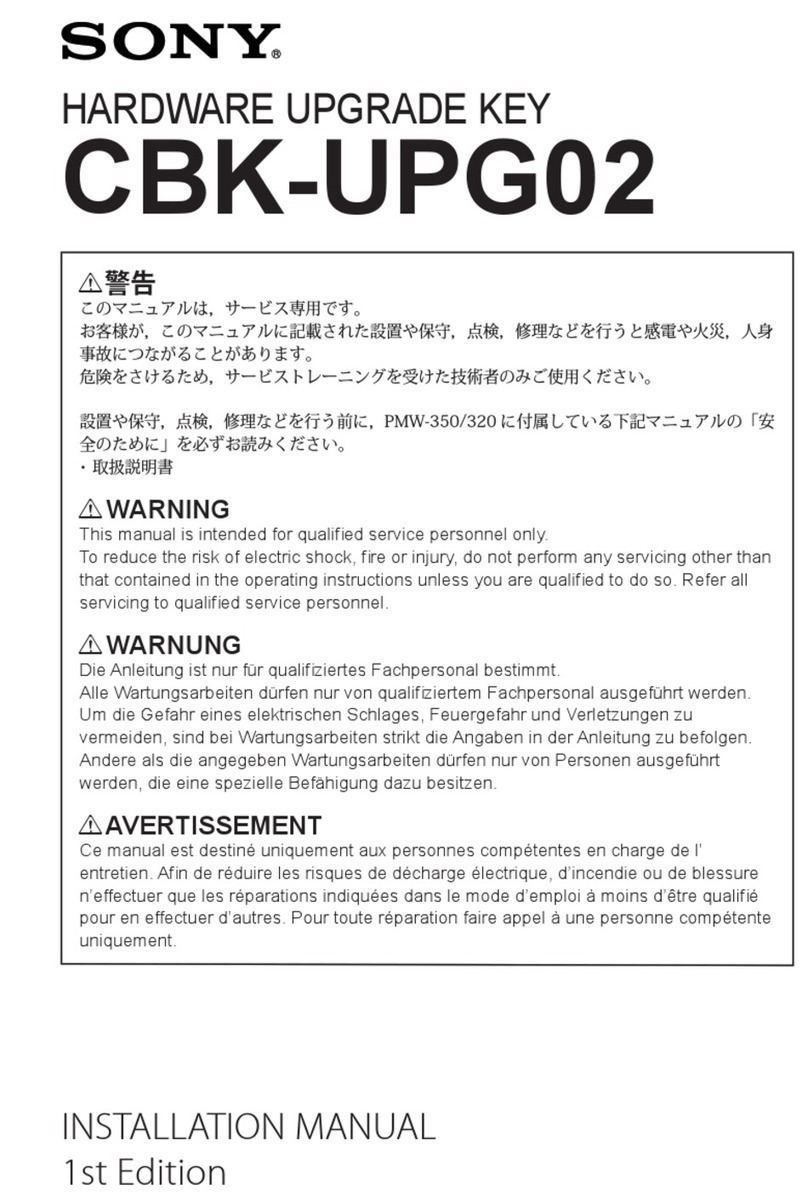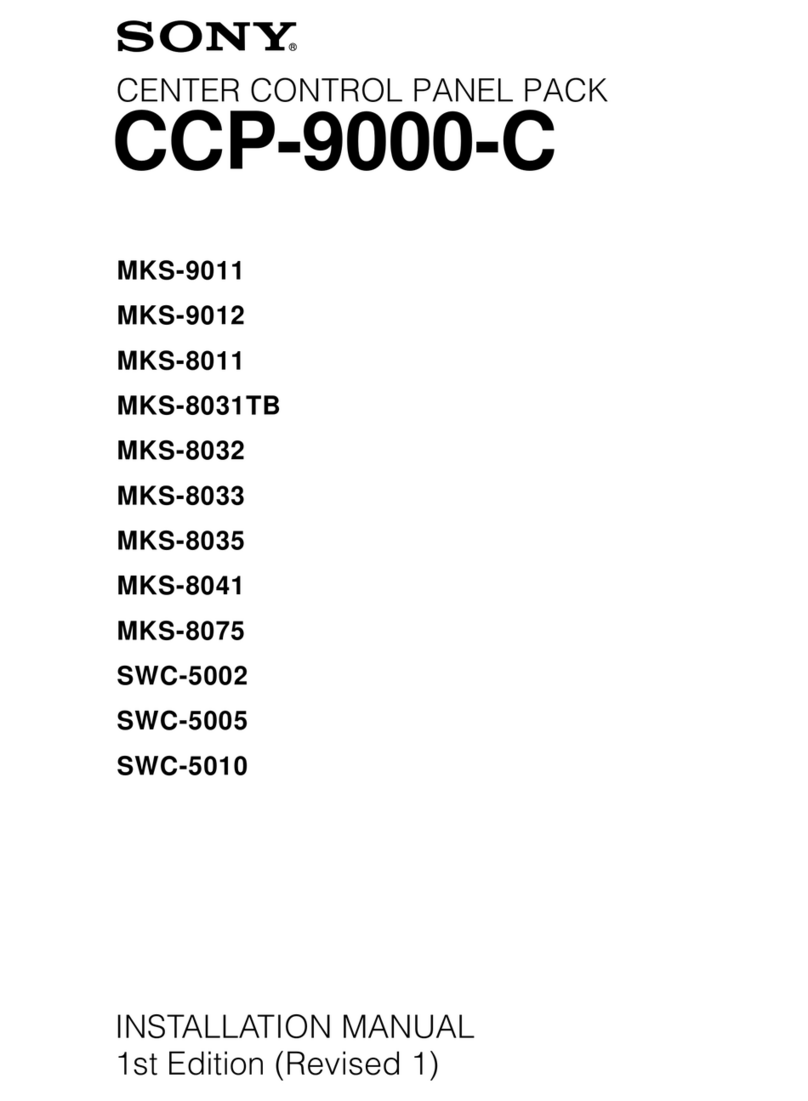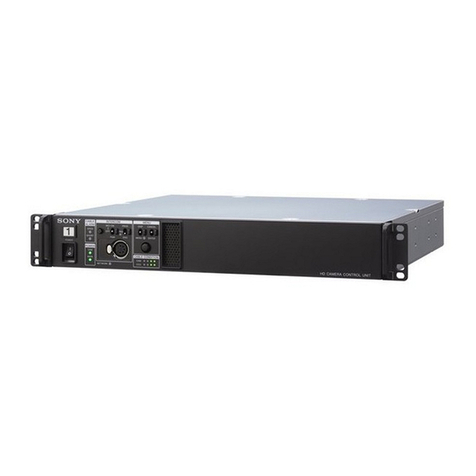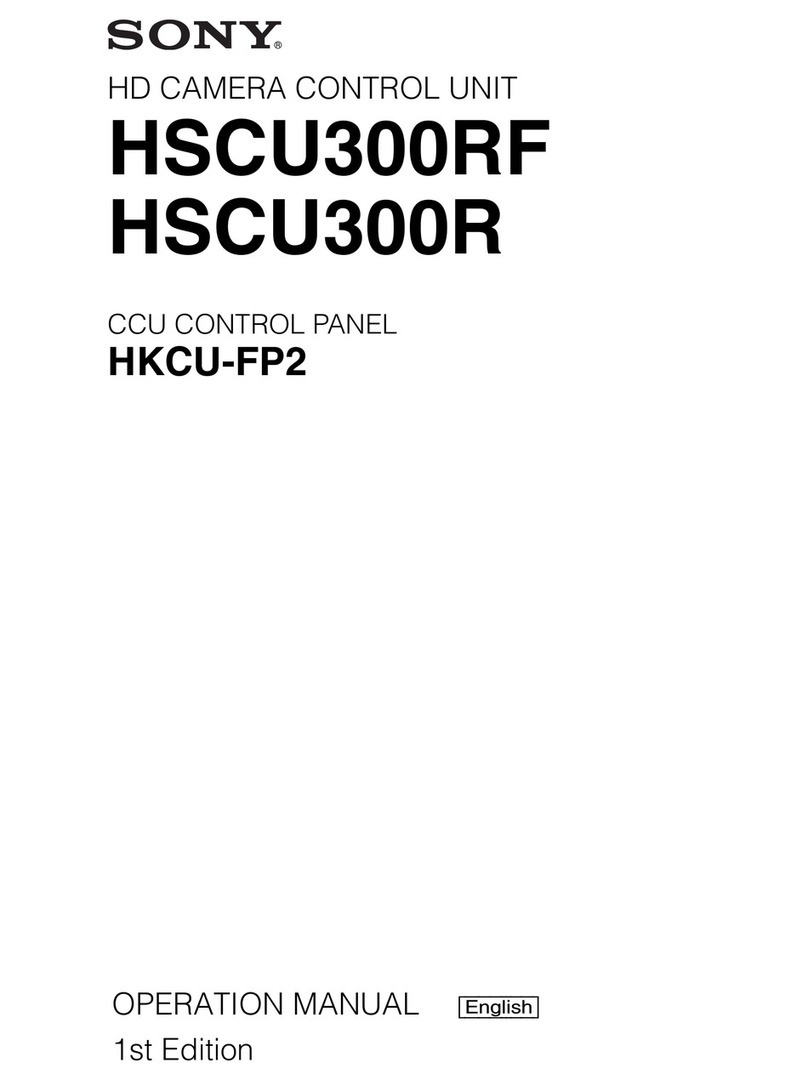
4Overview
Overview
The HDCU2080 Camera Control Unit is connected to a Sony
HD-series high-definition video camera. It carries out signal
processing and provides an interface for external equipment.
This unit may be combined with an MSU-1000 series Master
Setup Unit (optional) or an RCP-1000 series Remote Control
Panel (optional) to form a camera control system. Further, a
system capable of controlling multiple video cameras can be
configured by adding a CNU-700 Camera Command Network
Unit.
The HDCU2080 has the following major features.
Front panel for increased usefulness
The HDCU2080 features a design that places menu operation
switches and status LEDs related to optical transmission, etc.,
on the front panel. These were moved from under the cover of
the HDCU1080’s front panel, providing even greater
convenience.
Multiple video inputs and outputs
The HDCU2080 features the following standard-feature signal
input/output ports.
• Four SDI outputs (HD/SD switchable outputs)
• Four HD/SD-SDI return inputs
• Four SD analog return inputs
• Two teleprompter inputs
In addition, a variety of input/output interfaces are offered via
optional installable boards.
HKCU2007 3G/HD SDI Output Expansion Unit
This provides four 3G-SDI or HD-SDI outputs.
With multiple boards of this type installed, the HDCU2080
outputs up to 16 HD-SDI signals.
Note
The HDCU2080 does not support 3G digital optical output.
HKCU1001 SD Encoder Unit
Installing this board makes it possible to output SD analog
composite signals (PAL), SD picture monitor signals and SD
waveform monitor signals.
HKCU1003 Multi Interface Unit
This board consists of 3 types of VDA boards, and makes the
following input/output signals possible:
• Frame reference input and output to lock 2-3 pull-down
sequence
• SD analog component signal (RGB or Y/R-Y/B-Y) or SD
analog composite signal output
• SD analog composite signal (PAL) output, SD picture
monitor signal output, SD waveform monitor signal output
External reference signals
The HDCU2080 can be locked to an external reference signal.
Either an HD tri-level sync signal or an SD sync (black burst)
signal may be used as the reference signal.
Built-in down converter
When the system is operating at a 50 Hz field frequency, HD
signals can be converted to SD component SDI signals using
the down converter. The output signal aspect ratio may be set
to 4:3 edge crop, 16:9 squeeze, or letter box. The down
converter has image enhancement, gamma control, and
matrix ON/OFF features, and can be controlled externally.
Built-in simplified up converter
The HDCU2080 has a simplified up converter to allow
monitoring of SD signal return video using an HD viewfinder.
The aspect ratio of the return video signal may be set to 4:3
edge crop, 16:9 squeeze, or letter box.
Digital Optical Transfer
The HDCU2080 may be connected to a camera using an
optical fiber cable (two single-mode optical fiber lines, two
power lines and two control lines) for the transmission of digital
video, audio, and control signals. By connecting together
optical fiber cables, signals may be transmitted up to a
maximum of 4,000 meters (13,100 feet). The maximum length
of the cable supplying power varies with the camera system
configuration and with the type of optical fiber cable.
The HDCU2080 can also be connected to the HDC1580
camera.
Safety-oriented power supply
The HDCU2080 is designed for safety. When the power is
turned on, a low voltage is supplied at first. Only after it has
been verified that an appropriate camera is attached, the
normal 240 V AC power supply is activated. The power is not
supplied unless a camera is connected via an optoelectric
cable.
Also, the HDCU2080 is equipped with an alarm indicator to
warn of open or short circuits in the cable.
Wide range of audio functions
This unit has connectors for two-channel analog audio
outputs, a digital audio output, and a program audio input.
Further, the HDCU2080 can use an intercom system with two
independent channels, and supports four-wire and RTS/Clear-
Com intercom systems.
For information on support for RTS/Clear-Com systems,
contact a Sony service or sales representative.
Remote control
The level and phases of this unit’s output signals can be
controlled remotely by an MSU-1000 series Master Setup
Unit.
Microphone volume control
The camera’s microphone volume can be controlled via the
MIC REMOTE/MSU/RCP connectors.

